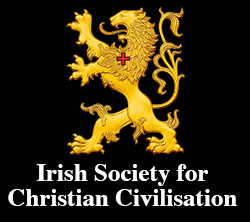By Plinio Corrêa de Oliveira
That in Which They Are Equal—First Distinction
The word mandate has two meanings. One is the general meaning which indicates an imperative order of a legitimate authority to a subject. Another is the most restricted sense of the mandate that Our Lord gave to the hierarchy. As it is easy to see, there are a thousand possible mandates both in the civil and ecclesiastical orders. A master who imposes a task on his servant gives him a mandate or command. A Mother Superior who gives an order to a nun imposes on her a mandate or command. Our Lord also imposed a mandate or commandment on the hierarchy, that is, He gave them the obligation of exercising the powers He bestowed upon them.
A most important consideration enters here. The powers that Our Lord bestowed on the hierarchy constitute one thing and the “commandment,” obligation, or “mandate” He imposed on them to exercise these powers is another. Since the very act of transmission of powers was imperative, one gives it the name of mandate. But the nature and scope of the powers, in themselves, have nothing to do with the imperative form of the duty to make use of them. Thus, two mandates given by the same master to the same servant can bestow very different powers.

In What They Are Different—Second Distinction
The command imposed by Our Lord on the hierarchy is a command. The command imposed by the hierarchy on Catholic Action, and likewise on other organizations, is a command. But this does not allow us to conclude that the rights communicated in one case and the other are substantially identical.
The Church orders that members of Marian Congregations be governed by those congregations’ presidents; that the Marian Federations exert certain general authority over the Marian Congregations, and so forth. But this imperative act, command, or mandate does not communicate to the Congregations’ presidents or to others any power intrinsically participative in the hierarchical power of the Church.
Learn More About Stories of the Supernatural from Padre Pio
Thus, to substantially confuse the Mandate par excellence, that of the hierarchy, with the other mandates existing in Holy Church is to positively practice the sophism called “equivocation,” in which two different meanings are given to the same word and freely interchanged.
It is perhaps important to present a clarification also in regard to the powers of the presidents of Catholic Action, of Marian Congregations, and of others.
The Leaders of Catholic Action Unquestionably Have a Certain Authority; But One Cannot Claim That Such Authority Has An Essence Identical to That of the Hierarchy
Catholic Action has an effective authority over its members and, even more, over third parties, in regard to the accomplishment of its aims. It was entrusted by the hierarchy with a task of instrumental collaboration, so those who lead Catholic Action according to the intentions of the hierarchy do so by the hierarchy’s authority. Neither the members of Catholic Action nor third parties can violate the authority of Catholic Action leaders without implicitly impugning the hierarchy’s own. Does this mean that Catholic Action is incorporated to the hierarchy? No. It exercises a function of subject, precisely like the head of a group of workers, who directs the laborers in their activities on the master’s property and must not be disturbed in the exercise of his authority by the workers or by third parties. This does not mean that he shares in the right of property but that he acts by virtue of the owner’s authority.
What is said of Catholic Action is said also regarding the leaders of any other endeavor established by the Church, such as the “Work for the Preservation of the Faith” ordered by Leo XIII.
As we saw, a transgression of the powers of the instrumental collaborator will be much more serious the more categorical and solemn is the expression of the owner’s will. Thus, while transgression of the authority of someone acting by mere advice is less serious, it still is a transgression of authority. Therefore, no one, save a member of the hierarchy itself, can legitimately prevent a Congregation president from governing his sodality, exactly as happens within Catholic Action. Sodality members who revolt against him revolt ipso facto against the hierarchy. And third parties who raise obstacles to the legitimate activities of a Congregation, Third Order, and the like, rise up, in final analysis, against the hierarchy itself. The difference rests only in that the transgression will be less serious when the work of a religious association is simply recommended or permitted than when it is commanded.





